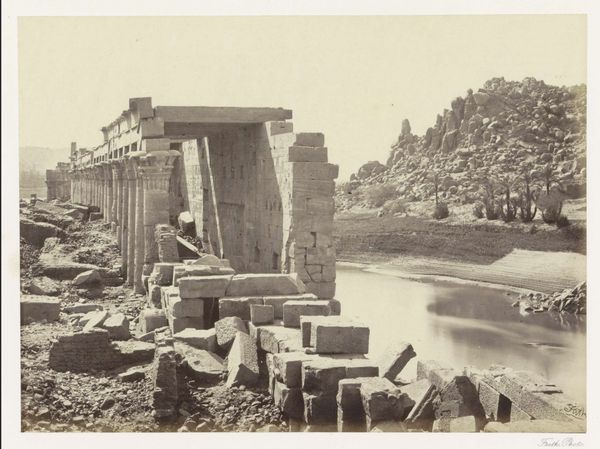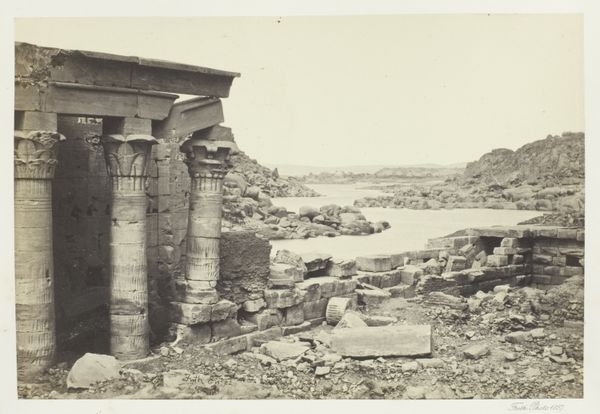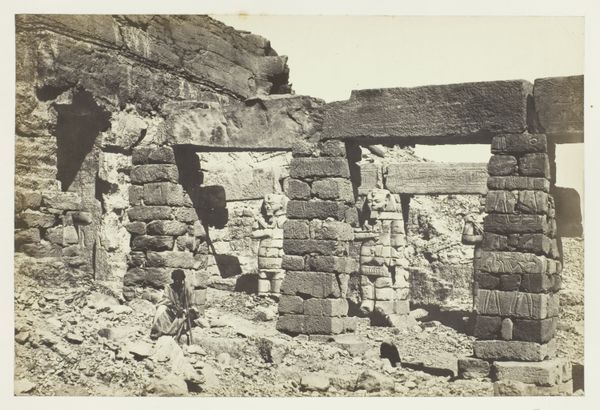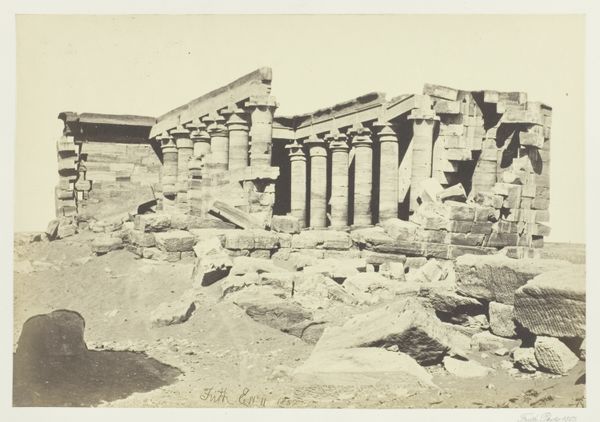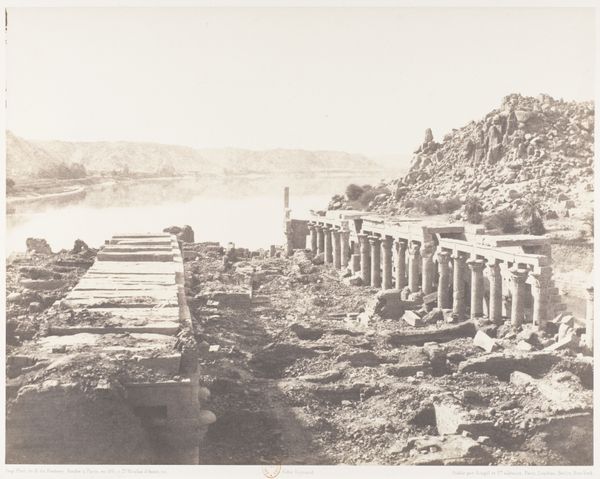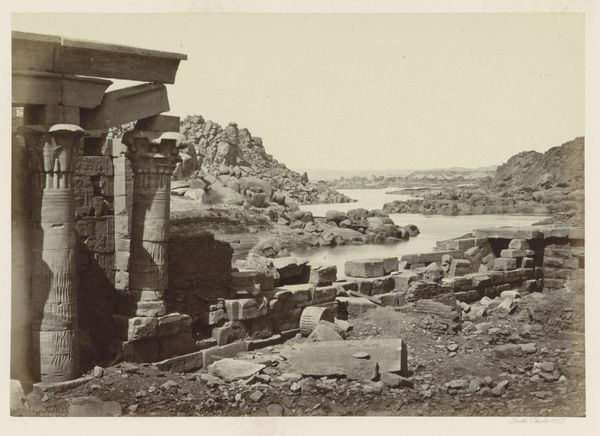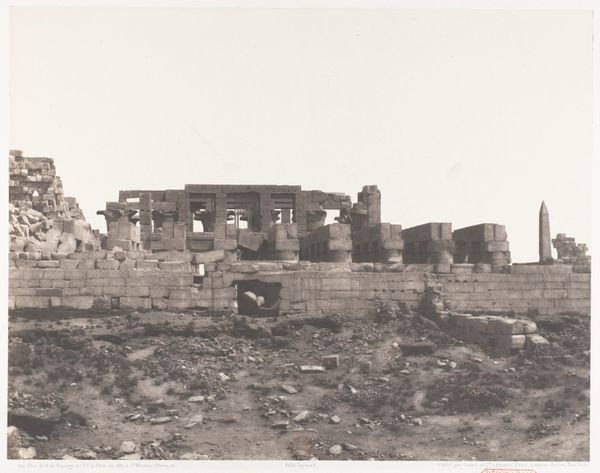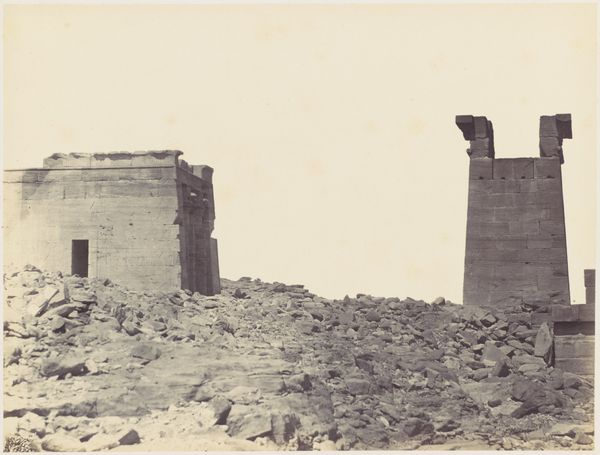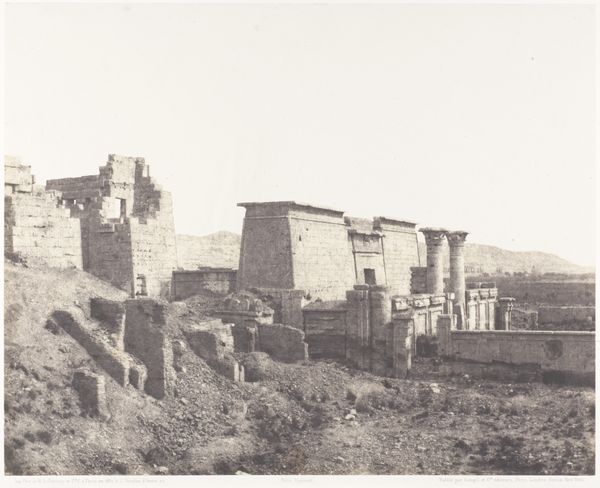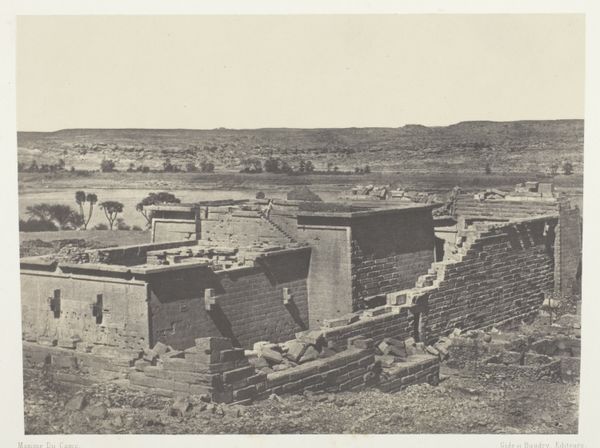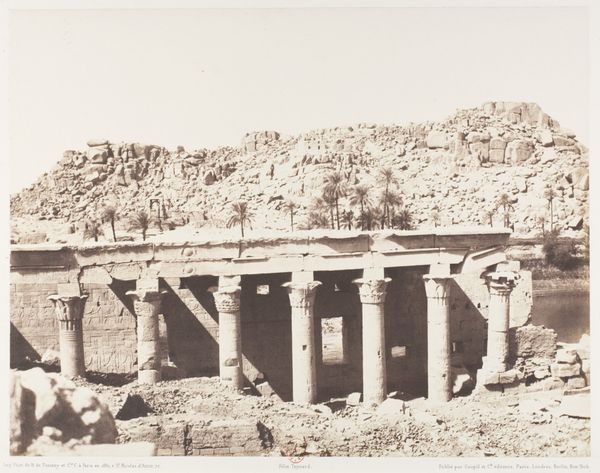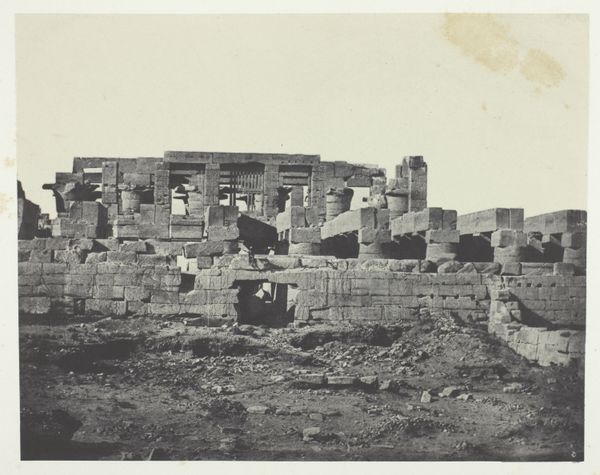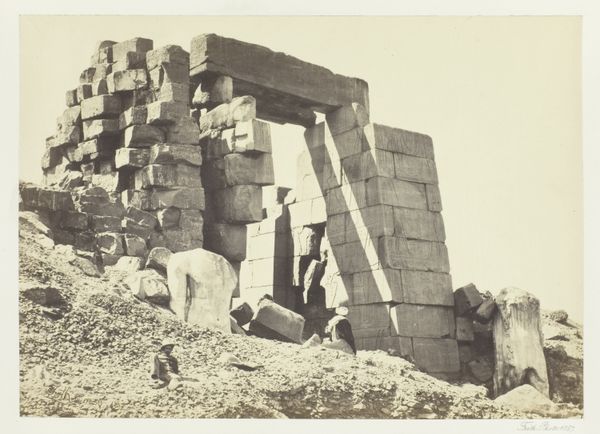
silver, print, photography, albumen-print, architecture
#
silver
# print
#
landscape
#
ancient-egyptian-art
#
photography
#
egypt
#
ancient-mediterranean
#
albumen-print
#
architecture
Dimensions: 15.7 × 22.8 cm (image/paper); 29.6 × 42.6 cm (album page)
Copyright: Public Domain
Editor: This is Francis Frith's 1857 silver print, "The Colonnade, Island of Philae." The texture and light create an amazing sense of depth, almost hyperreal. What stands out to you when you look at this piece? Curator: Immediately, I think about whose gaze is centered here. Frith, a European man, travels to Egypt, photographs this ancient site, and brings these images back to a Western audience. How does that power dynamic shape what we see, and how we're meant to see it? Editor: That's interesting! I was focused on the monumentality of the ruins themselves. Curator: But the ruins *speak* to that colonial project. Philae was a site of fascination, a place to be excavated, documented, and possessed through images. Notice how the photograph monumentalizes not only the ancient structure but also implicitly the photographer’s position. The figures, rendered small, almost anonymous, next to the architecture, emphasize the Western observer’s scale in relation to a civilization seen as “other.” Editor: So, by choosing this angle and these figures, he's subtly reinforcing a specific narrative about the relationship between the West and Egypt? Curator: Exactly. Consider too, the romantic idealization of ruins so prevalent in 19th-century Western art. It speaks to a certain way of framing history and cultural ownership. Does this change how you see it now? Editor: Absolutely. It’s not just a beautiful picture; it's a document deeply implicated in power structures. I'll never see landscape photography the same way. Curator: And that's precisely why engaging with art is so crucial. We unearth those hidden layers, prompting conversations about who controls the narrative.
Comments
No comments
Be the first to comment and join the conversation on the ultimate creative platform.
